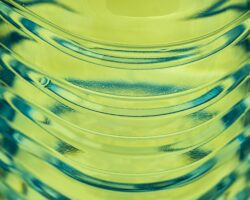
Introduction
In today’s ever-evolving world of science and research, one area that holds significant importance is peptide purity. Peptides, which are short chains of amino acids, play a crucial role in various fields, including pharmaceuticals, biotechnology, and even cosmetics. The purity of peptides directly impacts their effectiveness and safety for use. In this blog, we will explore why peptide purity matters and delve into the various methods used to assess it.
Importance of Peptide Purity
Peptide purity is of utmost importance when it comes to the development and application of peptides. Impurities in peptides can lead to a range of issues, such as reduced efficacy, potential side effects, and even toxicity. Therefore, ensuring high levels of peptide purity is essential to achieve the desired therapeutic outcomes while minimizing any undesirable consequences.
Factors Affecting Peptide Purity
Several factors can influence the purity of peptides. The synthesis process itself plays a crucial role, as any deviations or errors can result in impurities. Additionally, the quality of raw materials, reagents, and solvents used during synthesis can impact the final purity. It is vital to carefully monitor and control these factors to obtain highly pure peptides.
Common Methods of Assessing Peptide Purity
Several methods are employed to assess peptide purity, providing researchers with valuable insights into the quality of their synthesized peptides. Two widely used techniques are High-performance Liquid Chromatography (HPLC) and Mass Spectrometry (MS).
High-performance Liquid Chromatography (HPLC)
HPLC is a powerful analytical technique used for separating and quantifying components in a mixture. It is widely employed in peptide purification and analysis due to its high sensitivity and accuracy. By utilizing a stationary phase and a mobile phase, HPLC can effectively separate impurities from the target peptide, providing a quantitative assessment of purity.
Mass Spectrometry (MS)
Mass Spectrometry is another indispensable tool for assessing peptide purity. It enables the determination of molecular weights and the identification of impurities based on their mass-to-charge ratios. By comparing the obtained mass spectrum with theoretical values, researchers can confirm the presence or absence of impurities, ensuring the desired peptide purity.
Other Techniques for Assessing Peptide Purity
In addition to HPLC and MS, there are other techniques available for assessing peptide purity. These include but are not limited to capillary electrophoresis, nuclear magnetic resonance spectroscopy, and amino acid analysis. Each technique offers unique advantages and may be employed based on the specific needs of the research or application.
Conclusion
Peptide purity is a critical factor in ensuring the quality, efficacy, and safety of peptides. Through various assessment methods such as HPLC and MS, researchers can determine the extent of purity and identify any impurities present. By prioritizing peptide purity, we can unlock the full potential of peptides in multiple fields, ultimately improving human health and well-being.
